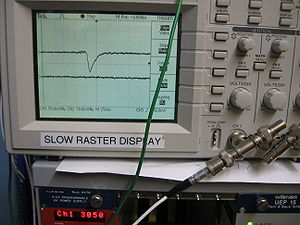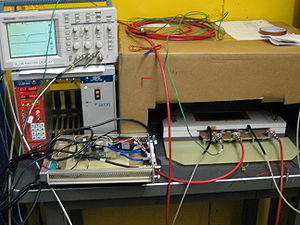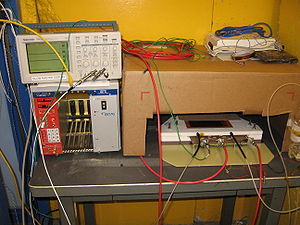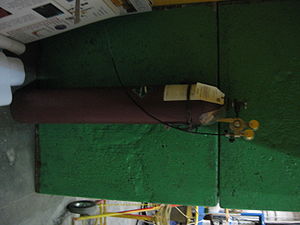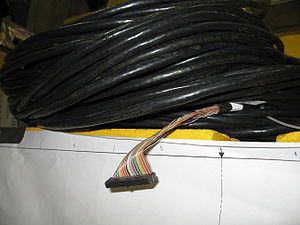Qweak GEM installation log book
5/12/2010
Detector installation
The Qweak GEM detector has been installed in the doghouce in Hall-C and the HV was turned on. On the scope picture below is shown the GEM trigger out pulse, after it has been amplified and integrated with timing filter amplifier. The high voltage supply is placed in the doghouse with the other electronics.
Electronics
We have the NIM Bin with the following modules: Leading edge discriminator, timing filter amplifier(X2), Gumstix module.
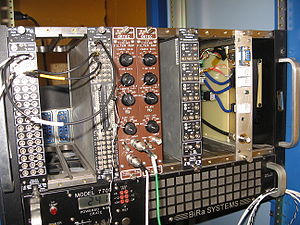
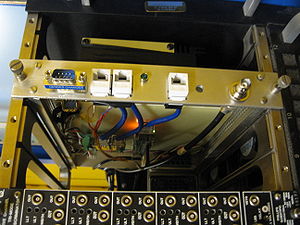
Gas
The gas bottle filled with ArCO2 is placed outside the doghouse. We have two 90 ft shielded twisted ribbon cables next to region 1 area.
cables need to be routed about colimator 2.
5/13/2010
Met with Kelly Tremblay to discuss survey plans. Goal is to be ready for Qweak collaborators and survey crew to align detector on June 4. The "Fork" used to connect the GEM detector to the translator will be fiducialized for the laser survey system by mounting 4 targets on the fork. The request is to have the "Y" location surveyed in to 100 microns (this is essentially ) . We desire the X-location to be surveyed within 250 microns. The Z - location beam upstream/downstream is the least critical.
DAQ computer name is : cdaql6
R1 ROC name : qwvme11 (129.57.168.81)
using the terminal server to login to the R1 ROC
- telnet hctsv11 2008
Gumstix and I2C
Brad Sawatzky: Contact for ordering gas ionfrastructure (bubbles, hose , valves,...)
5/14/2010
Gumstix sees the network now. It will be known as qwgemgumstix and have the IP address 129.57.168.91
We may also use the terminal server to login via the Gumstix's serial port but you must be logged into cdaql6 (or a computer on the same network as cdaql6)
- telnet hctsv11 2007
Runcontrol runs the cMsg server.
Gumstix contains cMsg client and subscribes to the Runcontrol cMsg server. once receiving message from ROC it then send out a message of the current thrshold value which the ROC has subscribed to . This tells the ROC to pulse again.
Carl Timmer has a sample code in C.
use Send and Get
ROC is a cMsg client as well
ROC spawns a task upon userGo and starts stepping through Discriminator setting task start a pulse and sleeps until a Mutext comes then it sends a cMsg to Gumstix
search jlab.org
nameserver 129.57.32.100
nameserver 129.57.32.101
[cdaq@cdaql6 ~]$ nslookup cdaqfs
Server: 129.57.32.100
Address: 129.57.32.100#53
Name: cdaqfs.jlab.org
Address: 129.57.168.10
auto eth0
iface eth0 inet static
address 129.57.168.91
netmask 255.255.252.0
network 129.57.168.0
broadcast 129.57.171.255
is go to the next threshold setting.
Location of Qweak coda DAQ files
Readout lists cdaq@cdaql6 ~/coda]$ ls ~/qweak/coda26/crl/
[cdaq@cdaql6 crl]$ codamaster
ROC libraries
ls ~/qweak/libraries/vme/v1495_gem/
Error message from V1495.
-> v1495ReadEvent() 0x1ad8900 (tShell): v1495ReadEvent: Error: header for word 3 from data packet != 0xE va == qwvme11 boot parameters==
The firmware is set for 32 MHz but it looks like the actual clock is 31 MHz.
boot device : dc unit number : 0 processor number : 0 host name : cdaql6.jlab.org file name : /usr/local/coda/kern/5.5/vx2400_u1 inet on ethernet (e) : 129.57.168.81:fffffc00 host inet (h) : 129.57.168.46 user (u) : cdaq flags (f) : 0x20 target name (tn) : qwvme11 startup script (s) : /home/cdaq/qweak/coda26/boot/qwvme11.boot
5/15/10
LV1 accept to V1495 has to have a gate width at least 1 MCLK cycle less than 3 MCLK cycles.
We used cdaql6 to write several coda data files the the V1495 reading out 1 detect.
at MCLK=16MHz we created the files
v1495_28.dat.0 and v1495_29.dat.0
Run 28 was short, run 29 was very long.
I saw the following CHIP IDs in the data file but the thresholds are so high there were no hits
Card=0 ChipID=0xa6c i = 14 Card=1 ChipID=0x8ec i = 28 Card=2 ChipID=0x8ec i = 42 Card=3 ChipID=0x6ec i = 56 Card=4 ChipID=0x0 i = 70 Card=5 ChipID=0x66c
Its seems Card 4 is not getting its ID recorded but its I2C is responding. Perhaps a failed card? We loer MCLK to 8 MHz no change
